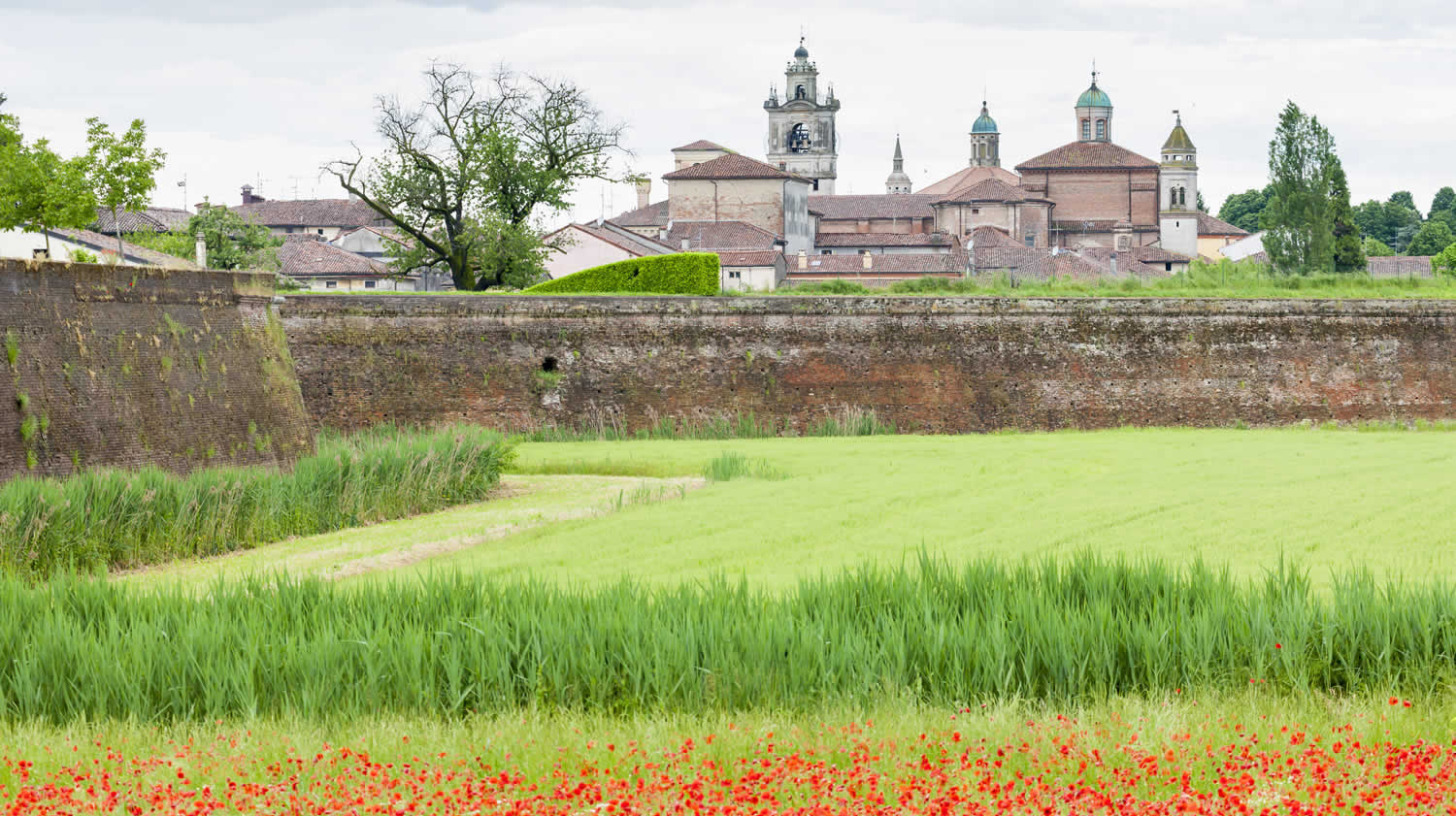Chronology of the phases of construction
and transformation of the Walls of Sabbioneta
MuraAperTe - Chronology of the Walls of Sabbioneta
The construction of the fortifications of Sabbioneta, ordered by Vespasiano Gonzaga, began during the second half of the 16th century. The intent of the future duke was to provide the capital of his fief with a modern defensive system, consisting of bastions and embankments able to withstand the artillery attacks.
An extended wall in the shape of an irregular hexagon was therefore designed, about six to seven metres high compared to the ground level, composed of an external brick lining supported by buttresses and by a mass of earth behind it and backfill, sloping down towards the inside and surrounded on the outside by a large moat.
Find out more
Chronology of the phases of construction and transformation of the Walls of Sabbioneta
“Thanks to their excellent conservation, the walls of Sabbioneta also offer an extraordinary testimony to the military architecture of the late Renaissance”












